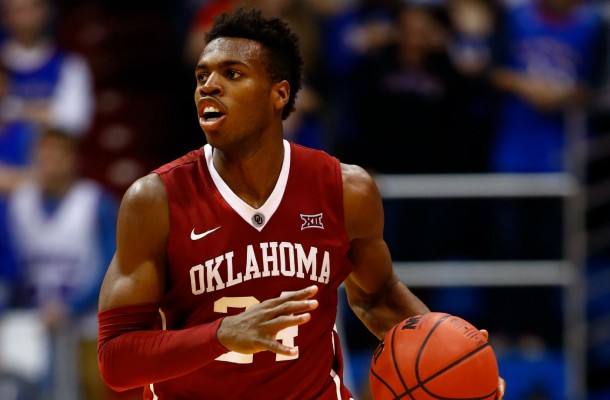Why I’m Excited For Buddy Hield

Despite scouts and fans having different ideas of Buddy Hield’s NBA career arc, there is one consensus: he can flat out shoot. And it’s easy to see why Hield’s shot is universally lauded. In his senior year at Oklahoma, he shot a ridiculous 46% from 3 and made 147 3 pointers, the second most of any college player since some guy named Steph Curry.
The certainty with which analysts project Hield’s shooting is rare. As Jonathan Givony articulates here, projecting a prospect’s shooting ability is tough simply because there typically isn’t enough shooting data available. Contrary to most prospects, Buddy Hield has the shooting volume to substantiate his shooting percentage. Sprinkle in a reportedly world-class work ethic and it’s hard to fathom Hield not being a great NBA shooter.
I love stats. I believe in them. But it’s easy to fall into the trap of comparing the shooting abilities of players based on statistics and neglect how/why those stats were generated. Don’t get me wrong–I get excited about Hield’s career because of what I see in his numbers–but what makes me confident is combining those statistics with what I see on the floor.
Here are some of the things that define a great NBA shooter (in no particular order). These are important considerations in evaluating college shooters entering the NBA.
- Accuracy
- Ability to find space
- Willingness to find space
- Height of release point
- Ability to beat closeouts
- Quickness of release
- Balance
- Range
- Shot selection
- Stamina
- Confidence
Accuracy is the most glaringly obvious attribute of a good shooter. The other abilities don’t do much good if you can’t put the ball in the basket. But the NBA is not an open gym and the 3 point percentage you see on a stat sheet is a function of all of these abilities.
There are a number of NBA players who can knock down open shots–what separates special shooters is how consistently they get open and how quickly they can take their jumpers. Ultimately, a great shooter should be drawing attention from opposing defenses even if his shot is not falling on a particular night.
Every time the Pelicans play JJ Redick, Kyle Korver, or either of the Splash Bros, I wind up screaming at the TV. It seems so obvious that they shouldn’t be open, but they always find a way to get wide-open shots in crucial moments. They know where to move, when to move, and most importantly.. they move. This motion, coupled with their ability to knock down 3s, poses a unique threat to an NBA defense. It’s an impossible task for most defenses–they must account for these shooters (and limit their ability to play help defense elsewhere) or give up efficient perimeter shots.
And this is why I am so excited for Buddy Hield, who is phenomenal at identifying where he can find perimeter shots and moving his tookus to get there. He locates space in transition, off screens, spotting up, and is also adept at finding space after he gives up the ball. His ultra-quick release gives him access to more shots than shooters with slower releases and mitigates some of the worry around his flat-footed shot (and thus low release point). His excellent footwork allows him to side-step aggressive closeouts and hoist another shot or to drive to the rim.
Buddy is not a perfect player and will undoubtedly have to adjust to the length, quickness, and savvy of NBA defenders. His ball-handling is a work in progress and will be a pivotal area for improvement, as NBA defenses will chase him off the perimeter time and time again. But Buddy Hield has NBA range, ample confidence, lethal accuracy, and most importantly, his quick release and excellent movement should shift some help defense away from Anthony Davis. In a summer that could see Ryan Anderson move to another team, Hield’s unique talents are a most welcome addition.




